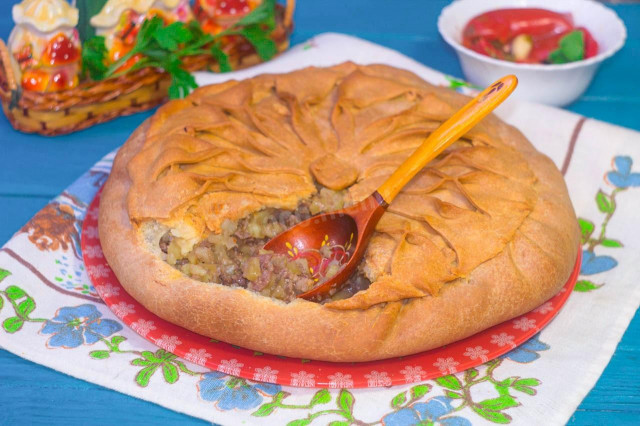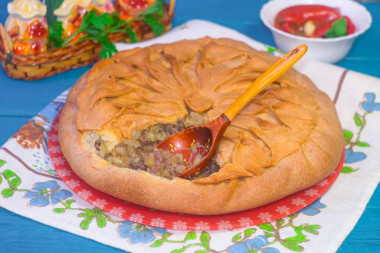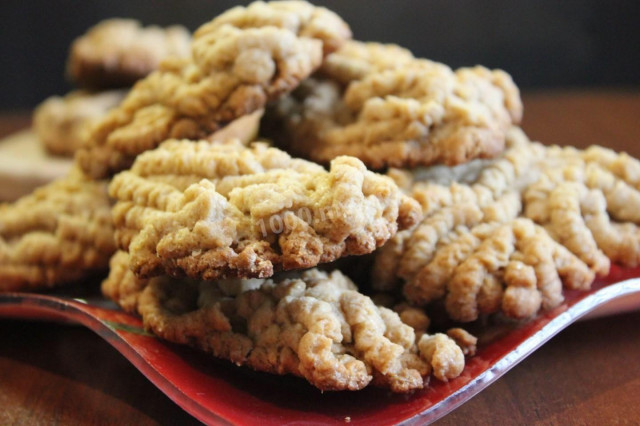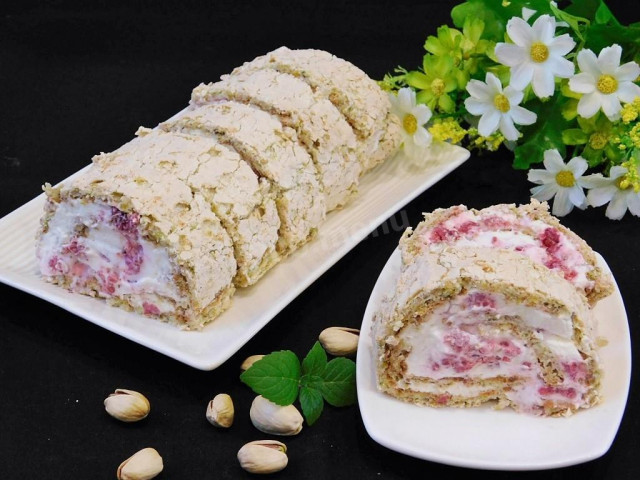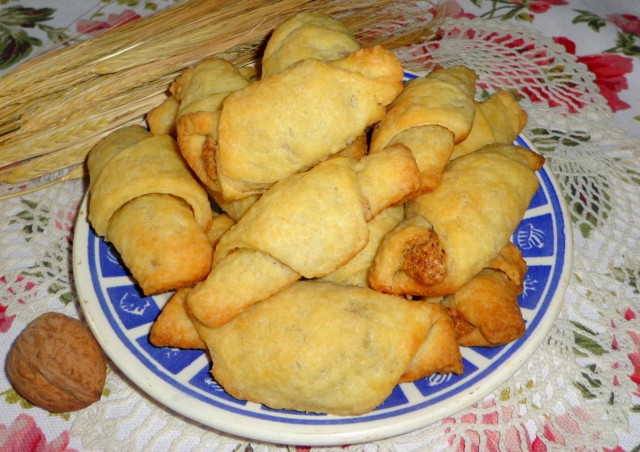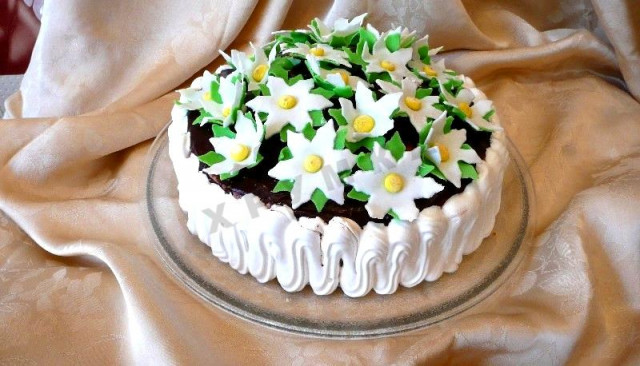Composition / ingredients
Step-by-step cooking
Step 1:

How to make balish with meat? Start cooking by kneading the dough. Prepare the products for him. Milk is suitable for any fat content. The oil is refined, odorless. Sift the flour — this will make the dough more lush.
Step 2:
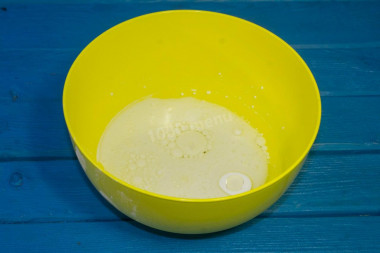
How to make dough? In a deep bowl, mix the milk and vegetable oil.
Step 3:
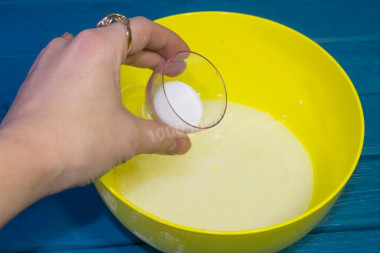
Add salt.
Step 4:

Pour in the sifted flour in portions and knead the dough, it should turn out quite steep. Be prepared for the fact that flour may need more or less than indicated in the recipe. Focus not on the amount of flour, but on the desired consistency of the dough. Leave it to lie down, and in the meantime, prepare the filling.
Step 5:
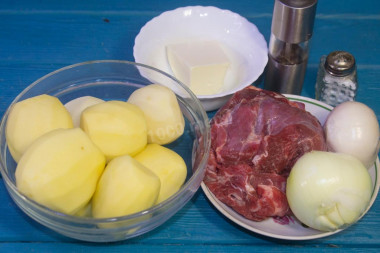
Prepare the products for the filling. Instead of beef, you can take lamb, chicken or turkey. Wash and peel the vegetables.
Step 6:
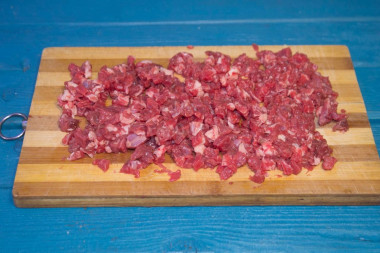
How to make the filling? Wash the meat and dry it well with a paper towel. Finely chop it into cubes — the smaller the better. It is better if the meat is with fat layers — the filling will turn out juicier.
Step 7:
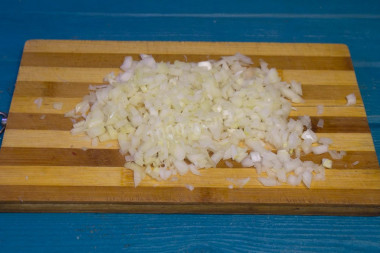
Peel and finely chop the onion.
Step 8:

Cut the potatoes into small cubes.
Step 9:
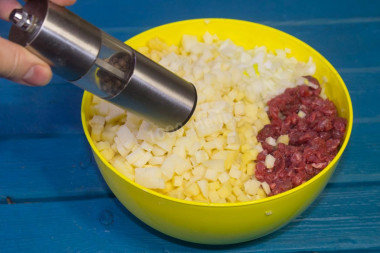
Combine meat, onion and potatoes in one bowl, add pepper.
Step 10:
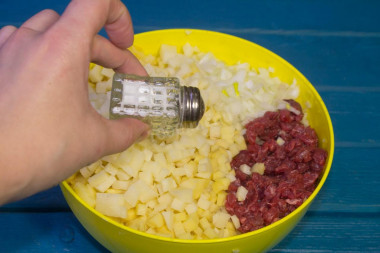
Add salt.
Step 11:
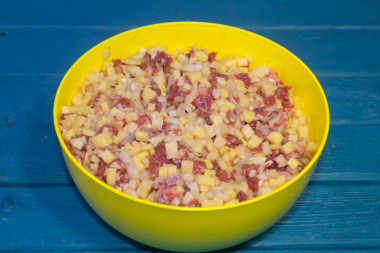
Mix the filling.
Step 12:

Meanwhile, the dough is already ready — during the "rest" it will become much more elastic and more convenient to work with. Divide it into 3 parts — one large and 2 small.
Step 13:
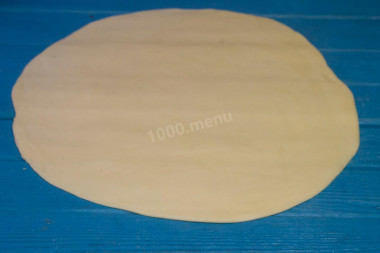
Roll out the largest part into a circle several millimeters thick.
Step 14:
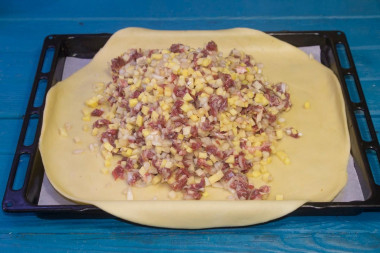
Put a layer of dough on baking paper in a round large form or just on a baking sheet, carefully put the filling in the center.
Step 15:
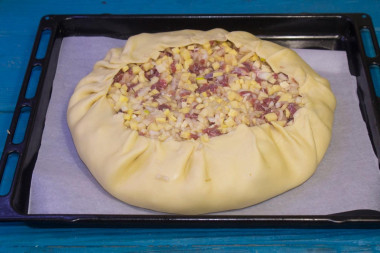
Pinch the edges of the dough in a circle, giving the pie the shape of a "saucepan", leaving a large hole.
Step 16:
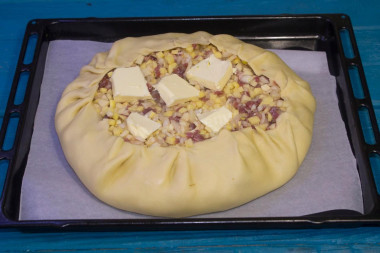
Put pieces of butter on top. Take natural, high-quality, delicious oil, without vegetable additives.
Step 17:

Roll out one of the remaining pieces of dough thinly and cover the pie on top.
Step 18:
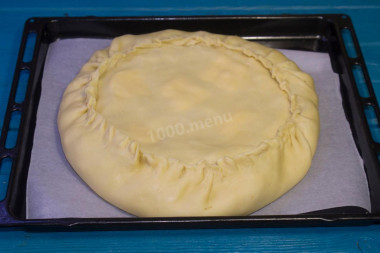
Gently pinch the edges so that the pie is completely closed.
Step 19:
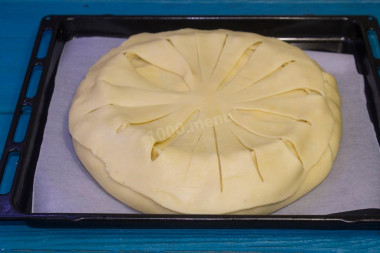
In principle, you can stop at the previous stage, but you can make the pie not only very tasty, but also very beautiful. Roll out the last part of the dough thinly and make incisions in segments, as in the photo.
Step 20:
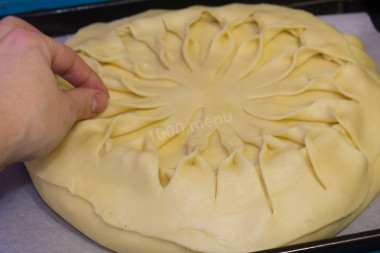
Connect the ends of the segments, you will get an interesting pattern.
Step 21:

Pinch the edges of the dough with a pigtail or tuck inside.
Step 22:

Make a hole in the center.
Step 23:

Close the hole with a piece of dough so that the pie is completely closed and send it to the oven, preheated to 180 degrees for 1.5 hours. If the top is very browned, you can reduce the temperature a little.
Step 24:
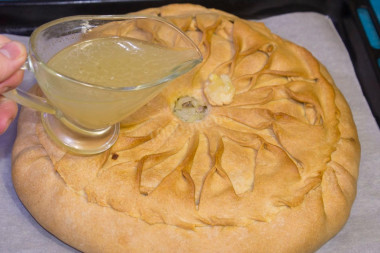
Remove the balish from the oven, carefully pour the meat broth into the hole and send it back to the oven, reducing the temperature to 160 degrees, for another 30 minutes.
Step 25:
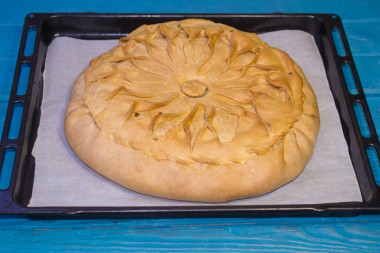
After the time has elapsed, the balish with meat is ready.
Step 26:

Serve it to the table uncut.
Step 27:

When serving, remove the top of the balish and arrange the filling in portions on a plate as a second course. Bon appetit!
Keep in mind that everyone's ovens are different. The temperature and cooking time may differ from those specified in the recipe. To make any baked dish successful, use useful information about the features of ovens !
Root vegetables are best washed with a brush or a hard sponge under running water.
Beef can be replaced with any other type of meat that you like best. But keep in mind that the cooking time, as well as the taste and calorie content of the dish will change. Pork and lamb tend to be fatter than beef, and chicken fillet or turkey are leaner. At the same time, the cooking time depends not only on the type of meat, but also on which part of the carcass is used and how old or young the meat is.
Caloric content of the products possible in the composition of the dish
- Ripe potatoes - 80 kcal/100g
- Baked potatoes - 70 kcal/100g
- Mashed potatoes - 380 kcal/100g
- Boiled potatoes - 82 kcal/100g
- Potatoes in uniform - 74 kcal/100g
- Fried potatoes - 192 kcal/100g
- Melted beef fat - 871 kcal/100g
- Fat beef - 171 kcal/100g
- Lean beef - 158 kcal/100g
- Beef brisket - 217 kcal/100g
- Beef - okovalok - 380 kcal/100g
- Beef - lean roast - 200 kcal/100g
- Beef shoulder - 137 kcal/100g
- Beef - ribs - 233 kcal/100g
- Beef - ham - 104 kcal/100g
- Beef - tail - 184 kcal/100g
- Boiled ham - 269 kcal/100g
- Beef corned beef - 216 kcal/100g
- Whole cow's milk - 68 kcal/100g
- Milk 3.5% fat content - 64 kcal/100g
- Milk 3.2% fat content - 60 kcal/100g
- Milk 1.5% fat content - 47 kcal/100g
- Concentrated milk 7.5% fat content - 140 kcal/100g
- Milk 2.5% fat content - 54 kcal/100g
- Ground black pepper - 255 kcal/100g
- Butter 82% - 734 kcal/100g
- Amateur unsalted butter - 709 kcal/100g
- Unsalted peasant butter - 661 kcal/100g
- Peasant salted butter - 652 kcal/100g
- Melted butter - 869 kcal/100g
- Vegetable oil - 873 kcal/100g
- Onion - 41 kcal/100g
- Wheat flour - 325 kcal/100g
- Table salt - 0 kcal/100g
- Meat broth - 34 kcal/100g

